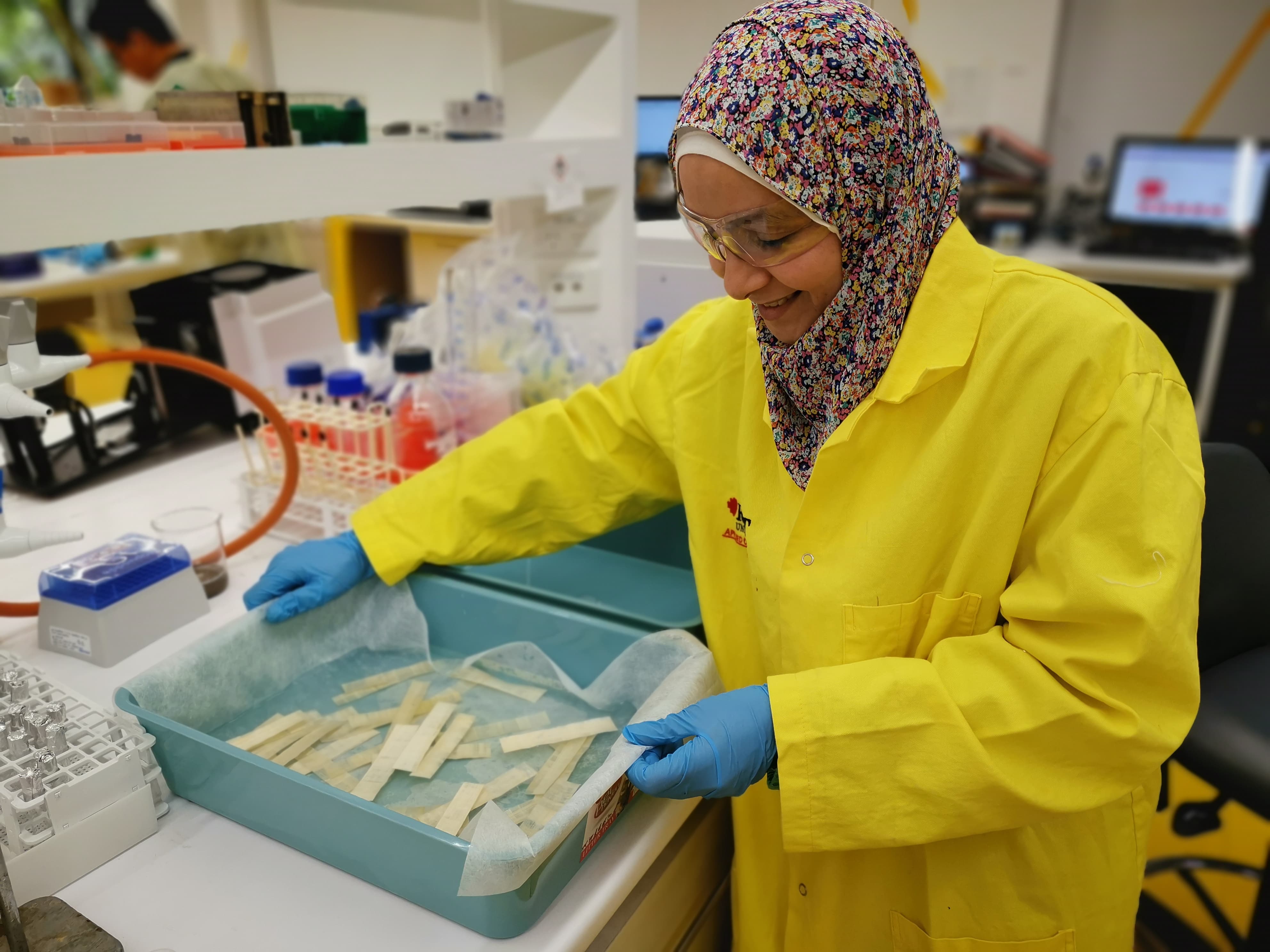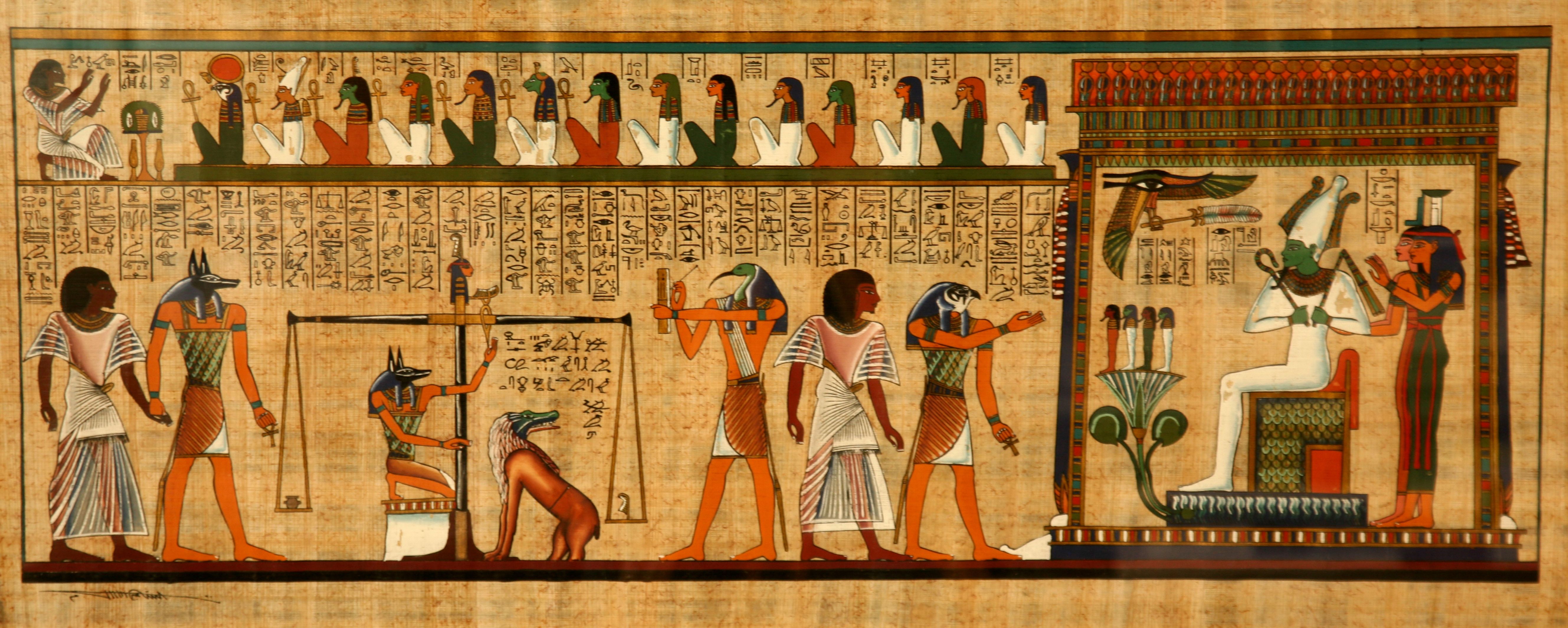Non-Invasive Methods for Studying Papyrus from Ancient Egypt
Arzak Mohamed from Macquarie University in Australia broke down how she uses spectroscopy to analyze ancient manuscripts.
Spectroscopic techniques are helping scientists better analyze ancient manuscripts made from papyrus.
Derived from the wetland plant that shares its name, this paper-like material was used from 3100 BC until the 11th century AD. While it is most known for its use in ancient Egypt, papyrus was also widely used throughout southern Italy, the Mediterranean, and the Roman empire.
Arzak Mohamed, a PhD student and researcher at Macquarie University in Australia, uses analytical methods including X-ray fluorescence (XRF) spectrometry, X-ray diffractometry, Raman spectroscopy, Fourier transform infrared (FTIR) spectroscopy, and scanning electron microscopy to analyze ancient papyri and ink.Spectroscopy spoke with Mohamed about her work and how advances in spectroscopy have helped her further the study of ancient texts.
Q: What are some of the key challenges scientists face when analyzing ancient manuscripts?
A: Ancient manuscripts could include papyrus sheets, parchment, or paper. I am interested in papyrus sheets, which is the first flexible writing surface invented by ancient Egyptians and was the main writing support for more than 3000 years.
During my work in examination and analysis of archaeological papyrus, I encountered some challenges, like handling fragile papyrus, which need careful treatment during examination and need specific set up of the instruments to avoid any damage can happen during this process. Another challenge could be the limited availability of the analytical instruments. For example, if you need specific instrument, and you cannot find it close your workplace, you need to transfer the samples somewhere else, so museums need to be equipped with non-destructive techniques. There are some limitations that we face with instruments, such as inadequately sized stages especially scanning electron microscopy. Finally, the absence of papyrus standard for calibration for quantification study needs more attention from the analysts.
Arzak Mohamed handling fragile papyrus during her work. To analyze the papyrus, she uses X-ray fluorescence spectroscopy and scanning electron microscopy with energy-dispersive X-ray spectroscopy (SEM-EDS). Image Credit: Arzak Mohamed.

Q: Talk us through some of the analytical techniques you use to analyze papyrus.
A:To determine the elemental composition of the inks, pigments, and additives on the surface of the papyrus, I am using X-ray fluorescence spectrometry, and scanning electron microscopy with energy-dispersive X-ray spectroscopy (EDS). I am also using X-ray diffractometry to determine the mineralogical composition. In addition, I'm using FTIR to identify the ink's binder and see if any other organic ingredients were employed to prepare the papyrus surface for writing. Raman is also used, particularly when examining black ink, as XRF is unable to characterize carbon, the primary component of lamp black.
I always seek to answer questions such as location of papyrus production, the revealing of fake objects and the dating of unknown samples. I have analyzed papyrus samples from The Egyptian Museum in Cairo, the Egyptian National Library and Archive in Bulaq, and the Macquarie University History Museum and the Chau Chak Wing Museum, both in Australia.
I am also interested in evaluating and testing materials to select the appropriate one for papyrus conservation, so I apply these materials on modern samples and use the analytical methods to assess the effectiveness of these materials on papyrus fibers and their inks.
Q: What recent developments in analytical spectroscopy have helped you improve your work?
A: I am happy with the development on the analytical instruments. I think the scientists are doing their best to have portable and non-destructive instrument.
I worked with a Bruker M4 Tornado Micro-XRF spectrometer in quantification of ancient papyrus, as it is a non-destructive technique, and the stage is suitable for big papyrus. In addition to that FT-IR microscopy and portable Raman also facilitate papyrus examination process.
I think the industry section is now aware with the requirements of the archaeological sector, and every day there is a development in the current instruments. I hope these companies can reduce the price of instruments, especially for universities and museums in middle- and low-income countries, to give the researchers in these countries access to updated facilities.
Q: What is the most interesting finding you have come across in your work?
A: During analysis of a section of the Book of the Dead from 3rd century BC belonging to the Chau Chak Wing Museum, there was a golden decoration on the papyrus, and I thought it was made from gold, but the analysis revealed there is no gold in the elemental composition of the golden regions, and the main elements is arsenic and sulfur, so the compound is orpiment.
papyrus of the dead ancient egypt | Image Credit: © francescodemarco - stock.adobe.com

I also analyzed twenty papyri from Macquarie University History Museum, and I have found high concentration of calcium. When we checked the information about these samples, I found that these papyrus fragments were recycled during the Roman Period, and were used in making cartonnage cases, which is a protective casing providing physical and magical protection for mummified bodies. I was able to determine whether the papyri have been extracted from cartonnage by the presence or absence of high concentrations of calcium on papyrus surfaces, and by the presence of the mineral calcite. My publication for this study is under peer review process.
This interview has been edited for length and clarity.